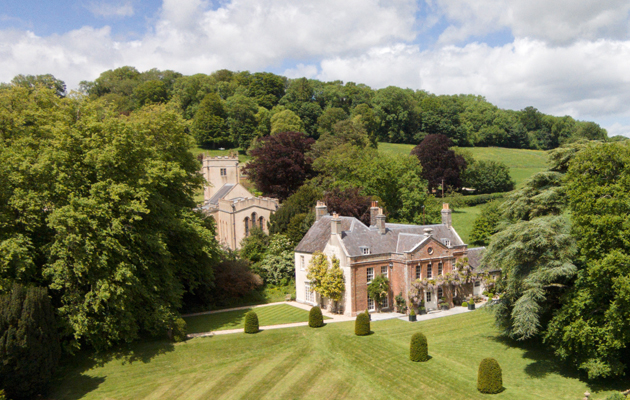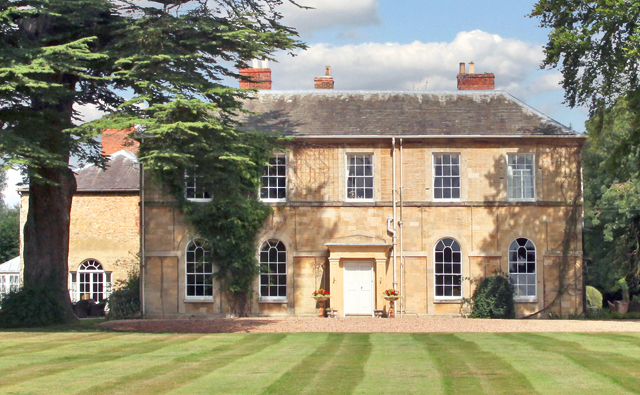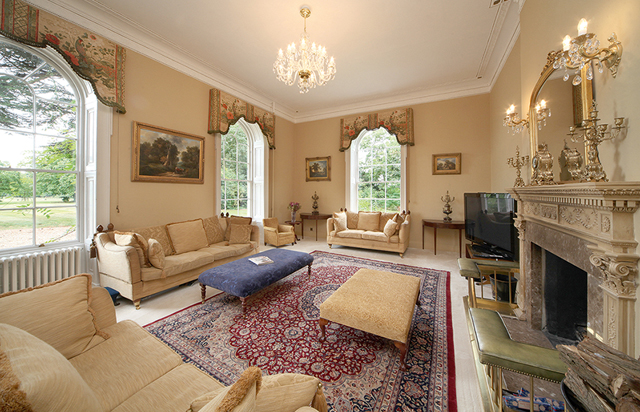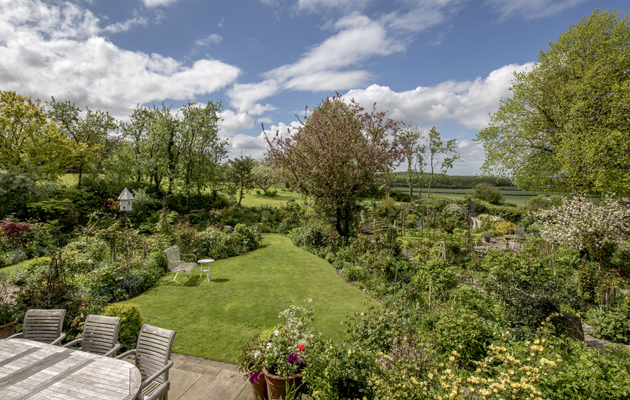Houses worth unpacking your bags for
Penny Churchill looks at two properties worth putting down roots for.


After seven years of a recession that has affected the property market all around the world, with the sole exception of London, everyone involved at the upper end of the English country-house market was anticipating a swift return to ‘business as usual’ following the unexpected result of the General Election.
But, as James Mackenzie of Strutt & Parker’s country-house department admits, ‘despite the hype, the truth is that the post-election boom simply hasn’t happened. The combination of the new Stamp Duty rates and rigorous mortgage testing has had a greater impact than expected and demand at the top end of the market has slowed down, with properties over £3 million to £4 million struggling to secure offers’.
He adds: ‘Having said that, it’s not all gloom and doom. The perennial attraction of good commuter towns such as Guildford, Winchester, Bath, Oxford, Cambridge, Cheltenham, Bristol and their surrounding villages is still very strong, and getting stronger. Properties that stand out architecturally or historically, and are realistically priced, will still attract a lot of interest. We recently sold such a property in Dorset for more than the £3.95 million guide price within three days.’
Lindsay Cuthill of Savills is philosophical about the slow rate of recovery at the upper end of the English country market: ‘On May 8, I spoke to a client who revealed that, metaphorically at least, his bags were packed before the election. I now believe that both buyers and sellers were so taken by surprise at the result that, mentally, they have still not unpacked their bags. Let’s not forget that it can take a long time to unpack a big suitcase.’
He continues: ‘Before the election, everyone was utterly obsessed by the “mansion tax”, but that now appears to perhaps have been the excuse behind which reluctant buyers hid. Now that the threat has gone, buyers at the upper end of the market are coming to terms with the enormous costs involved in moving and they will only look at houses that appear to represent exceptional value for money. The recovery may be happening at a pace that doesn’t necessarily suit everyone, but it is happening. And when you think what might have been, had the election result gone the other way, things suddenly begin to look a whole lot better.’

Fortunately for wealthy would-be escapees who have now decided to stay, several newcomers to the country-house market are worth unpacking even the biggest suitcase for. Top of the list comes the gorgeous, Grade II-listed Buckland Newton Place at Buckland Newton, Dorset, which is being launched on the market by Savills (020–7016 3870) at a guide price of £3.25m. The classic, brick-built, Queen Anne house, with a south-west wing added in the mid 1800s, stands on the edge of the village, next to the parish church of the Holy Rood, to which it was once the vicarage.
Set in some four acres of secluded formal gardens and grounds protected by woodland, the house—described by Pevsner as ‘characterful’—stands on high ground overlooking a small, river-fed lake, beyond which is a five-acre paddock and, beyond that, the peaceful rolling Dorset countryside. The main façade of the house is covered by a magnificent single wisteria that stretches almost its entire length; the sweeping front lawn is dominated by a stately cedar.
Sign up for the Country Life Newsletter
Exquisite houses, the beauty of Nature, and how to get the most from your life, straight to your inbox.
The previous owner of Buckland Newton Place was the late Sir William Aykroyd, an aesthete with a passion for art and architecture, who, when once asked why he’d bought a Rolls-Royce, replied simply: ‘I would feel so foolish without one.’ Having bought the house in the early 1970s, he set about bringing it back to life, filling it with furniture and objets d’art acquired from leading British antique dealers and galleries, along with pieces from his ancestral seat, Grantley Hall in North Yorkshire. Another artistic friend, Tom Parr of Colefax and Fowler, was commissioned to decorate the house in the firm’s inimitable style.

The present owners of The Place, as it was previously known, bought the house following Sir William’s death in July 2007 and embarked on a substantial programme of renovation, reconfiguring the interior to make it more suitable for family occupation. As selling agent Ed Sugden points out, the main driving force in the country since 2008 has been the schools market, and the proximity of Buckland Newton Place to the leading Dorset schools was a major factor in their decision to buy. Now, however, their daughters have finished their schooling and, with life again focused on London, they find that they can no longer spend as much time in Dorset as they would like, hence the decision to sell.
Its refurbishment complete, Buckland Newton Place offers six well-proportioned reception rooms, a light and airy kitchen/breakfast room and seven bedrooms with five bathrooms on the two upper floors—all equally well arranged for family living and formal entertaining. Sir William’s famous art collection may be gone, but the house is still awash with elegant period features, including some fine panelling, sash windows with original working shutters, ornate cornicing, original fireplaces and flagstone floors. Ancillary buildings include a three-bedroom coach house with stabling and garaging.
Damian Gray of Knight Frank in Oxford (01865 790077) is not entirely convinced that Stamp Duty is a major issue for serious buyers at the top end of the country-house market, especially in areas within easy reach of the Oxford schools and the commuter rail stations of Thame, Didcot and Charlbury. A shortage of good stock is a far bigger problem, he finds, with vendors unwilling to accept offers until they themselves have found a house to buy.

Another house that could tick those extra boxes for prospective buyers, he suggests, is Grade II-listed, Georgian Lathbury Park, on the banks of the River Ouse at Lathbury, Buckinghamshire, not far from the commuter hub of Milton Keynes. One of three important houses on the outskirts of the Cromwellian stronghold of Newport Pagnell—the others being Gayhurst and Tyringham Hall—Lathbury Park was held in the 13th century by the monks of Lavendon Abbey and, from 1599 by the Andrewes family, before passing to Mansel Dawkins Mansel, who built the present house over the original Jacobean cellars in 1801.
The current owners of Lathbury Park—who bought the house in 2011 —set in 31 acres of wooded park-like grounds, have completely refurbished it, adding or improving kitchens and bathrooms and creating a cinema room within the guest wing. Knight Frank quote a guide price of £3.25m for this Georgian gem, which boasts four main reception rooms, a gym, a conservatory, a kitchen/breakfast room, eight bedrooms and five bathrooms, with room for four further bedrooms and two bathrooms.
Outside, a large courtyard with a range of timber buildings incorporates garaging, stabling and a former granary.
* Search country houses for sale

Best of British: stunning summer gardens [PROMOTION]
Fine & Country present a selection of country houses boasting enviable outdoor space.
-
 Vertigo at Victoria Falls, a sunset surrounded by lions and swimming in the Nile: A journey from Cape Town to Cairo
Vertigo at Victoria Falls, a sunset surrounded by lions and swimming in the Nile: A journey from Cape Town to CairoWhy do we travel and who inspires us to do so? Chris Wallace went in search of answers on his own epic journey the length of Africa.
By Christopher Wallace Published
-
 A gorgeous Scottish cottage with contemporary interiors on the bonny banks of the River Tay
A gorgeous Scottish cottage with contemporary interiors on the bonny banks of the River TayCarnliath on the edge of Strathtay is a delightful family home set in sensational scenery.
By James Fisher Published
